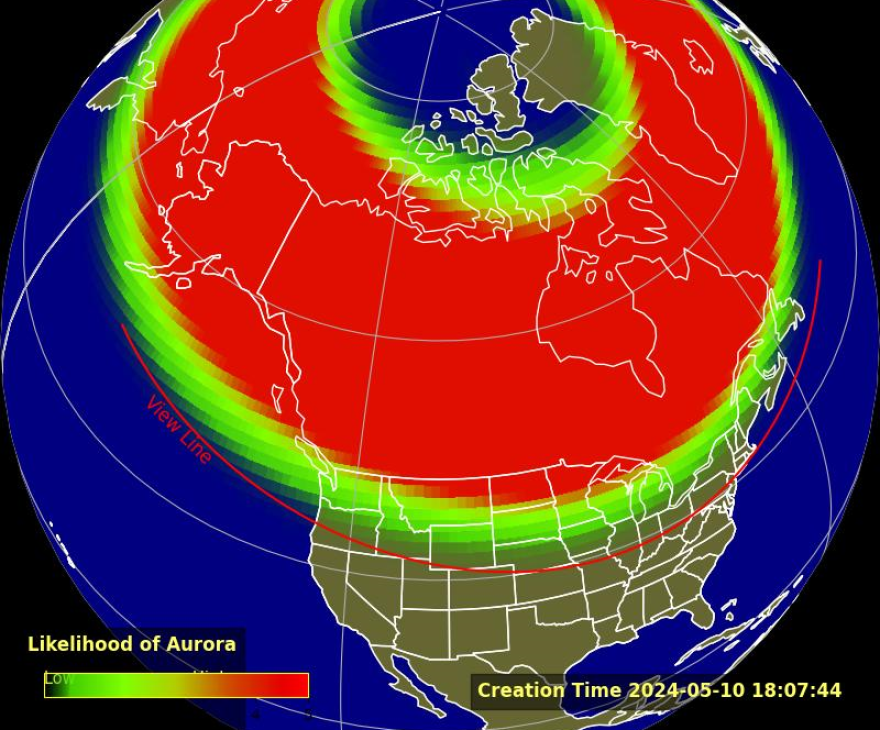Solar flares are causing a geomagnetic storm that should make it possible for Kansas City and other cities in the middle of the country to see the aurora borealis, which can usually only be glimpsed in northern latitudes. The best views are expected around midnight.
Friday night is a great time to look up at the sky, if you live on the north side of Missouri and Kansas: the northern lights, or aurora borealis, will make a rare Midwest appearance.
A geomagnetic storm caused by solar eruptions could make the lights — which are ordinarily seen from Alaska, the North Pole and other northern latitudes — visible farther south.
The best views will likely come around midnight, as the storm is expected to be at its strongest between 11 p.m. and 2 a.m.
Update:
• Photos: Aurora borealis in Kansas
, May 11, 2024
The National Oceanic and Atmospheric Administration says the aurora can be observed from as far as 1,000 kilometers away when it’s bright and if conditions are right — it doesn’t need to be directly overhead.
The predicted viewing line barely includes Kansas City and St. Louis, and sweeps up through the northwest corner of Kansas. The farther north you can go, the better your view will be.

National Weather Service meteorologist Nathan Griesemer told Kansas Public Radio that conditions are favorable to catch a good view.
“We should have mostly clear skies tonight,” he said. “If we look close to the horizon tonight, we might be able to see a little bit of a hue of the aurora borealis.”
NOAA reported that a “large sunspot cluster,” 16 times the size of Earth’s diameter, is producing strong solar flares this week, along with what are called coronal mass ejections (CMEs).
Those events are “explosions of plasma and magnetic fields from the sun’s corona,” NOAA says.
“Stronger disturbances around the sun can pull Earth’s magnetic field away from the planet, and when the magnetic field snaps back, it causes Alfvén waves, which electrons sometimes cling to,” NPR reports. “When those electrons reach Earth’s atmosphere, they mingle with nitrogen and oxygen molecules, causing visible light that manifests as the aurora borealis.”
You can learn more about how the aurora borealis happens from NPR’s Short Wave podcast.
Don’t miss a beat … Click here to sign up for our email newsletters
Click here to learn more about our newsletters first
Latest Lawrence news:
 Carter Gaskins/Lawrence Times
Carter Gaskins/Lawrence Times
 Molly Adams / Lawrence Times
Molly Adams / Lawrence Times
 Molly Adams / Lawrence Times
Molly Adams / Lawrence Times
 August Rudisell/Lawrence Times
August Rudisell/Lawrence Times
Latest state news:

Kansas Supreme Court Justice Eric Rosen sworn in as chief of state’s highest court
Kansas Supreme Court Justice Eric Rosen formally stepped into the job of chief justice Thursday by framing the delicate work of the state’s highest court as a crucial public service and proclaiming the citizenry’s diversity of perspective strengthened the rule of law rather than challenged it.









